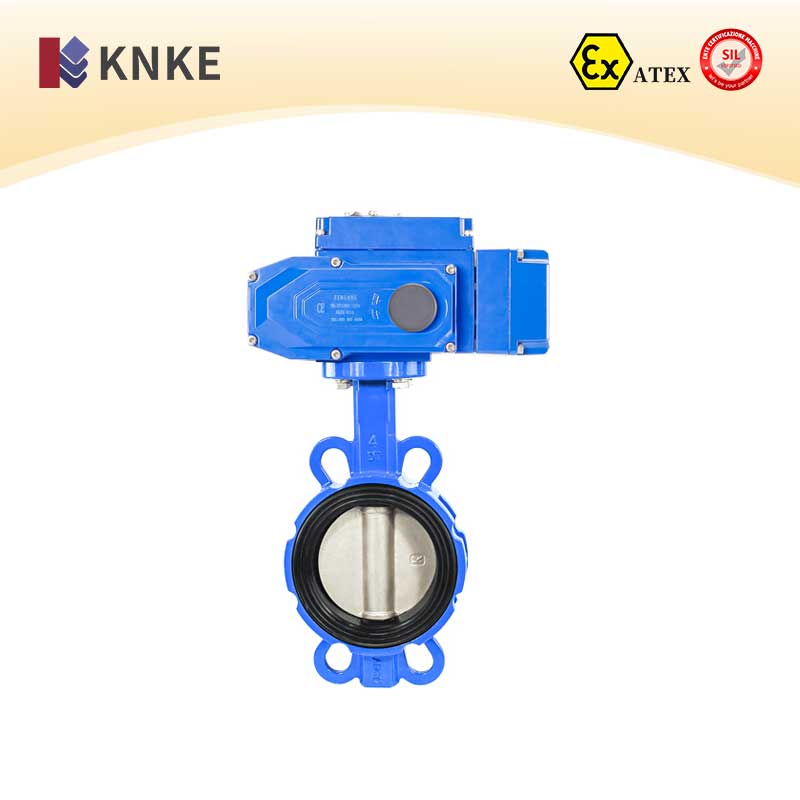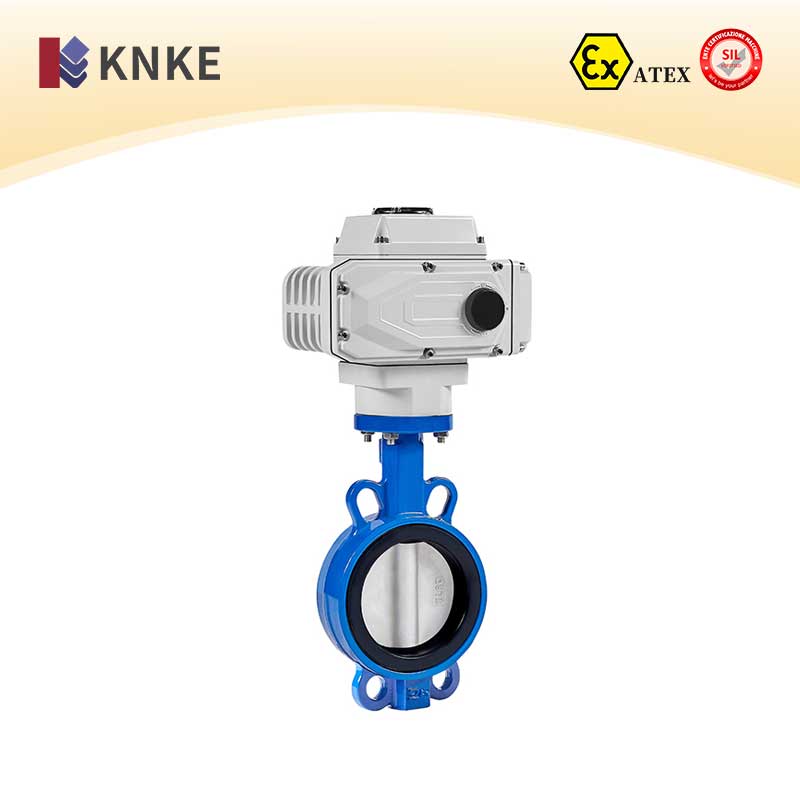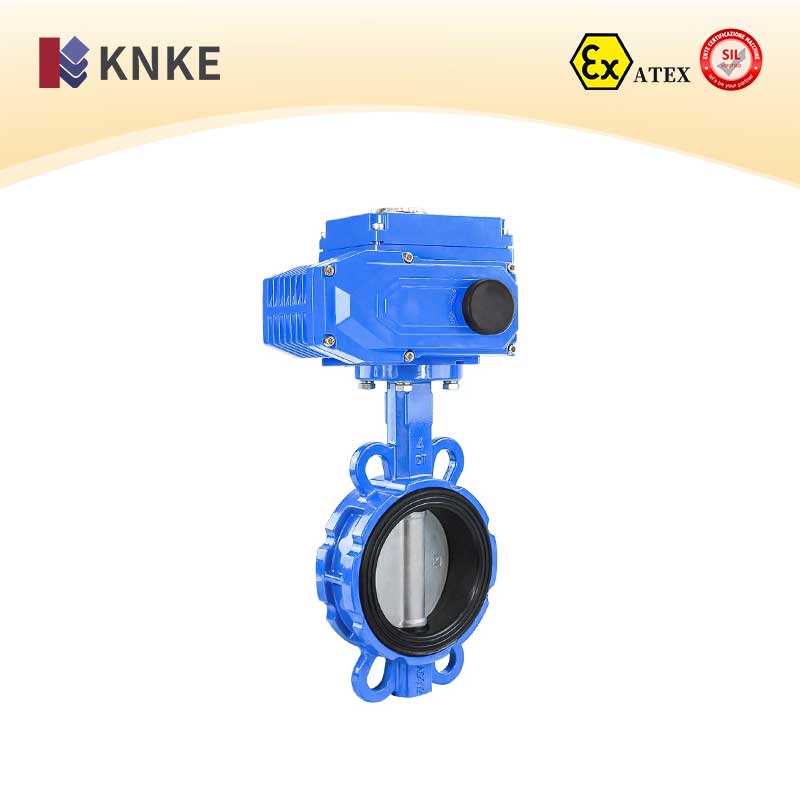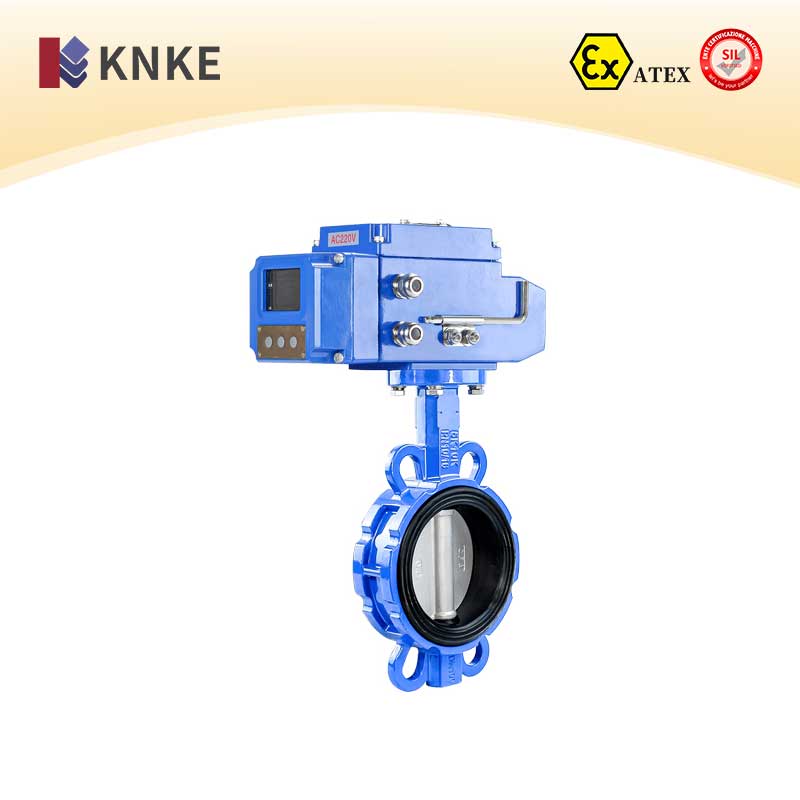Description
Overview of KNKE Soft-Sealing Butterfly Valve
The KNKE Soft-Sealing Butterfly Valve is designed for reliable flow control in various industries. It features a rubber soft-sealing disc paired with carbon steel or stainless steel valve plates and stems. The butterfly disc is installed along the pipe’s diameter. As the disc rotates, it opens or closes the valve. The rotation angle ranges from 0° to 90°. When the valve is fully open at 90°, maximum flow is achieved. This design ensures efficient operation in critical applications.
This valve is perfect for use in industries such as chemicals, petrochemicals, food, pharmaceuticals, and more. It handles a wide range of media, including steam, air, gases, oils, and aggressive chemicals like acids.
Applications of the KNKE Soft-Sealing Butterfly Valve
You can use the KNKE Soft-Sealing Butterfly Valve in many industries. For example, it works well in chemical plants, pharmaceutical facilities, and food processing plants. This valve controls a variety of media, such as SO2, steam, air, CO2, and more. It is particularly useful for regulating water, oils, and various acids, including sulfuric, hydrochloric, and phosphoric acid.
It serves as both a regulating and isolating valve in piping systems. Therefore, it ensures optimal flow control across a range of applications.
Key Features of KNKE Soft-Sealing Butterfly Valve
- Strong, Durable Construction: The valve body is made of high-strength materials like carbon steel or stainless steel. This ensures long-lasting performance, even in tough environments.
- Efficient Flow Control: The valve disc smoothly rotates from 0° to 90°. As a result, it allows for precise flow regulation and minimizes resistance.
- Reliable Sealing: The soft-sealing design guarantees a leak-proof operation, making it highly reliable in various applications.
- Wide Temperature Range: Depending on the sealing material, the valve operates in temperatures from -70°C to +150°C.
- Versatile Sealing Options: The valve offers a variety of sealing materials such as nitrile, EPDM, PTFE, and fluororubber. This allows you to choose the best material for your specific application.
Technical Parameters
| Parameter | Value |
| Product Name | Soft-Sealing Butterfly Valve |
| Product Model | NCD71X-10/16Q |
| Nominal Diameter | DN40 to DN300 |
| Connection Type | Wafer (Lugged) |
| Sealing Material | Chloroprene, Nitrile, EPDM, PTFE, Silicone, Fluororubber, Natural Rubber, Nylon |
| Nominal Pressure | 0.6 MPa to 2.5 MPa |
| Applicable Temperature | -70°C to +150°C |
| Function | On/Off, Regulation |
| Operation Type | Manual (Lever) |
| Installation Location | Pipeline |
| Valve Body Material | Ductile Iron, Carbon Steel, Stainless Steel |
| Structure | Vertical Plate Type |
| Applicable Media | Water, Oil, Gas |
| Testing Pressure | 1.5 times nominal pressure without leakage |
| Brand | KNKE (USA) |
Seal Material and Temperature Selection
Below is a table showing the sealing materials and their corresponding temperature ranges:
| Material Type | Abbreviation | Max Temperature | Min Temperature | Working Temperature Range |
| Chloroprene Rubber | CR | 82°C | -40°C | 0°C to +80°C |
| Nitrile Rubber | NBR | 93°C | -40°C | -20°C to +82°C |
| EPDM | EPDM | 150°C | -40°C | -40°C to +125°C |
| PTFE | PTFE | 232°C | -268°C | -30°C to +150°C |
| Silicone Rubber | SI | 250°C | -70°C | -70°C to +150°C |
| Fluororubber | VITON | 204°C | -23°C | -23°C to +150°C |
| Natural Rubber | NR | 85°C | -20°C | -20°C to +85°C |
| Nylon | PA | 93°C | -73°C | -30°C to +93°C |
Design and Manufacturing Standards
The valve meets various international standards, including:
- Design Basis: GB, API
- Design and Manufacturing Standards: JB/T10529-2005, GB/T12237-2007, API608-2012
- Structural Length Standards: GB/T12221-2005, ASME B16.10-2009
- Connection Design Standards: GB/T9113-2010, ASME B16.5-2013
- Drive Device Standards: GB/T12223-2005, BS EN ISO 5211-2001
- Material Standards: GB/T12228-2006, NB/T47010-2010, ASTM A105/A105M-2014, ASTM A182/A182M-2015
- Inspection and Testing Standards: JB/T 9092-1999, API 598-2009




